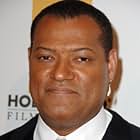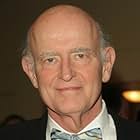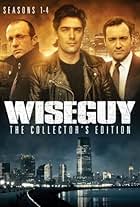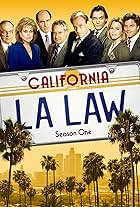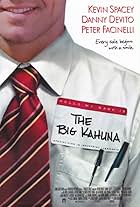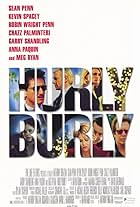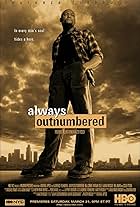Various stories about various people living in Tribeca - the famous New York neighborhood.Various stories about various people living in Tribeca - the famous New York neighborhood.Various stories about various people living in Tribeca - the famous New York neighborhood.
- Won 1 Primetime Emmy
- 2 wins & 3 nominations total
Browse episodes
Photos
Storyline
Did you know
- ConnectionsFeatured in The 45th Annual Primetime Emmy Awards (1993)
- SoundtracksKeep It Goin'
(Opening & Closing Theme)
Written by Christopher Cuben-Tatum (as Chris Cuben-Tatum) / La-Ron K. Wilburn (as Me Phi Me)
Performed by Me Phi Me
Courtesy BMG/RCA Records
Samples: "The Payback"
By
James Brown, Fred Wesley and John Starks
Featured review
Let me take you back to 1993. Here's a roster of people involved with this series:
Joe Morton
Philip Bosco
Eli Wallach
Melanie Mayron
Carl Lumbly
Carol Kane
Richard Lewis
Kevin Spacey (before the Oscars and the ugliness)
and executive produced by Robert de Niro.
You should realize that this show was not like anything on the air at the time; this was unique, even for basic or pay cable channels and definitely not like anything on the other broadcast networks.
Mr. De Niro's Tribeca Film Center had been up and running for a couple of years at this point, and that neighborhood is one of the oldest and most interesting in Manhattan. It was a no-brainer to make a show tailored to the area.
The concept of the program was different, too. This was an anthology series, meaning that the focus for the program changed to different characters and different stories. The two characters that held it all together were Philip Bosco, who owned a central coffee shop/diner called Zadie's, where everybody would eventually come for food and beverage, and a Mounted NYPD officer played by Joe Morton who responded to problems that arose. And I guess you can consider the neighborhood itself as another character that retained that continuity.
Another interesting element was how characters would just turn up - in one episode, they might have been buying a coffee and a sandwich at Zadie's like any rando, just as a matter of course, while another episode, the story was about them! It really attempted to give the feel of the people living in and around the neighborhood, and how a complete stranger one day can suddenly become the main focus on another.
I did leave one name off my roster of people above. Larry Fishburne (as he was still being credited, at this time), actually took home an Emmy Award for his appearance in the series pilot, titled "The Box." This was notable in that the show had been canceled several months before the Emmy Awards ceremony that year, yet Fishburne's performance was still the one the voters selected, a true tribute to both the performance and the writing of that brilliant episode.
New York was in every second of this series, as it was shot on location in the Triangle Below Canal Street. The geography was just as much a part of everything this series offered as those landmarks provided an authentic background for these genuine tales.
The trouble with an anthology series is that you never know what you're going to get. Besides that heavy drama with Mr. Fishburne, there was, for example, a comedy episode with Richard Lewis. And though our lives are mixed with ups and downs, we tend to like our television to be one or the other. It's sad that we couldn't adjust to a program that willingly showed the full palette of emotions, which I think was a major contributor to its early end.
Joe Morton
Philip Bosco
Eli Wallach
Melanie Mayron
Carl Lumbly
Carol Kane
Richard Lewis
Kevin Spacey (before the Oscars and the ugliness)
and executive produced by Robert de Niro.
You should realize that this show was not like anything on the air at the time; this was unique, even for basic or pay cable channels and definitely not like anything on the other broadcast networks.
Mr. De Niro's Tribeca Film Center had been up and running for a couple of years at this point, and that neighborhood is one of the oldest and most interesting in Manhattan. It was a no-brainer to make a show tailored to the area.
The concept of the program was different, too. This was an anthology series, meaning that the focus for the program changed to different characters and different stories. The two characters that held it all together were Philip Bosco, who owned a central coffee shop/diner called Zadie's, where everybody would eventually come for food and beverage, and a Mounted NYPD officer played by Joe Morton who responded to problems that arose. And I guess you can consider the neighborhood itself as another character that retained that continuity.
Another interesting element was how characters would just turn up - in one episode, they might have been buying a coffee and a sandwich at Zadie's like any rando, just as a matter of course, while another episode, the story was about them! It really attempted to give the feel of the people living in and around the neighborhood, and how a complete stranger one day can suddenly become the main focus on another.
I did leave one name off my roster of people above. Larry Fishburne (as he was still being credited, at this time), actually took home an Emmy Award for his appearance in the series pilot, titled "The Box." This was notable in that the show had been canceled several months before the Emmy Awards ceremony that year, yet Fishburne's performance was still the one the voters selected, a true tribute to both the performance and the writing of that brilliant episode.
New York was in every second of this series, as it was shot on location in the Triangle Below Canal Street. The geography was just as much a part of everything this series offered as those landmarks provided an authentic background for these genuine tales.
The trouble with an anthology series is that you never know what you're going to get. Besides that heavy drama with Mr. Fishburne, there was, for example, a comedy episode with Richard Lewis. And though our lives are mixed with ups and downs, we tend to like our television to be one or the other. It's sad that we couldn't adjust to a program that willingly showed the full palette of emotions, which I think was a major contributor to its early end.
Details
Contribute to this page
Suggest an edit or add missing content














